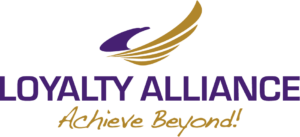Many managers face open resistance to changes taking place in their organization. What is most important to understand is whether the resistance is based in a positive or negative spirit.
For those readers who recall my post from earlier this year, I talked about How to Change People. In that post, I mentioned that the first thing to do when trying to change people is to let them change themselves. The second bit of advice I gave was to focus on the processes so that people would truly understand what an upcoming change means to them and their daily workflow.
As managers, supervisors, leaders, change agents, change sponsors, or change champions, we really can’t force anybody to change their ways. What we can do is inspire the people to want to adapt their mindset and actions to reach the goals and promises that come from an improvement. We can provide a safe, open, communication-friendly, no-blame culture where people are encouraged to ask any and all questions they have about a change or improvement.
Most people react to change with very simple questions about how their work will be affected and how their world will be impacted. While they don’t use these exact words, they really are most interested in knowing if their workspace is going to turn upside down, or not. I view these types of questions as positive. I would even go so far as to say that employees have a right to pose questions like this before they are expected to jump on the support bandwagon for a change. Even those who have been burned again and again by poor change implementation are not mean-spirited. They are simply very skeptical and need more convincing and information to counter their previous experiences.
There is a small percentage of people who will try to sabotage efforts and resist change efforts in a negative fashion. Find these people and make sure they do not influence others in the department or company. However, I caution you not to be too quick to judge people as negative unless you have ample information to come to this conclusion.
When I’ve come across change initiatives that have stagnated, I like to bring in the people responsible for effecting the change and have an open dialog with them. I first review the current state of the situation. Sometimes I’ll go back to a previous state and show the group how they have grown/changed to get to the current state. I then flesh out the desired future state with the group. Once I get everybody to agree on the benefits of the future state, understanding how their jobs will change, I then probe into the obstacles that are keeping them from reaching the future state.
Once the obstacles are identified, I ask the people to provide solutions for removing the obstacles. Getting their ideas on how an obstacle is “removed” from their perspective and yours may be totally different. Don’t assume your way is their way.
Now I can tell you that if a future state involves downsizing people and those people are present, don’t expect them to jump on the bandwagon. While you may not be able to change what will happen to them down the road, you can always coach them for the future and ask them if they want to be part of the change process, knowing their future state.
And if the proposed change will indeed make their life chaotic, unstable, and frustrating, then why would they support the initiative? Your responsibility at that point is to work through the chaos, instability, and frustration to help them find a calm, stable, pleasing environment. This may need to be done one-on-one.
So, let’s put this into perspective with a very simple example. Let’s say you wanted to reorganize your office layout, and started that project three months ago. Not a huge, life-shattering event to you, but the project has stagnated, and nobody has taken the initiative to start the shifting around process. What could come out of a simple group barrier analysis session is that one key person in the chain of dominoes moving around is unhappy with his/her new location but wasn’t asked for input before the plans were finalized. While in group session, if that person does not bring up his/her discontent with the new location, then shame on him/her. If he/she does, then find out what the solution is and see how the request can be accommodated.
The answer should not be to let the project stagnate. Define the problems, generate solutions, and implement the solutions.
Yes, this was probably a simple example for you. However, simple changes like this can get very emotional and personal for some people. What’s a non-issue to you may be a huge issue to someone else. Dig in, explore the reasons, and get people aligned to the goal as quickly as possible.
Benefits of running Barrier Analysis Sessions
- Lower costs by accomplishing projects as quickly as possible with as few distractions and resistance as possible
- Increase productivity by taking a stagnated initiative and breathing new life into it
- Improve morale by opening communication lines to learn the real concerns people have about a change initiative
- Develop management by giving them a vehicle for creating a culture where people can voice their concerns in a constructive manner
- Proactively handle the situation early and avoid reactively solving the problem later
Best Practices
- Conduct a barrier analysis session when initiatives become stagnated or derailed
- Make sure that the project champion or department manager participates in the session
- Use a facilitator from outside the department to bring fresh perspectives and unbiased suggestions to the group
- If you don’t have a framework or structured way to run the barrier analysis session, consider using the Conversation Framework HURDLES, by Innovative Management Tools. A collaborative activity that leverages the power of a specifically designed Miro interactive whiteboard on this topic.
My next post will explore how to best prioritize tasks for a project and focus your staff.
Until next time!
Please check out my newly designed website, www.innovativemanagementtools.com and my new YouTube channel, https://www.youtube.com/@INNOVATIVE-MANAGEMENT-TOOLS/videos and subscribe to be alerted when I upload new videos. Soon there will be a short video on the Conversation Framework mentioned in this article, HURDLES.
- Mini Deep Dive: Change Readiness – Undefined Action Plans - February 24, 2024
- Lean Conclusion: Navigating Your Lean Journey - February 16, 2024
- Going Lean, Part 5: Keeping the Momentum Going - February 9, 2024

